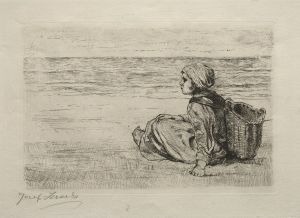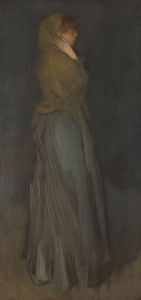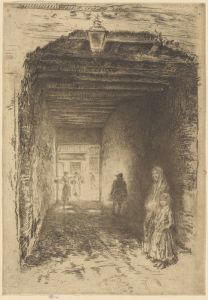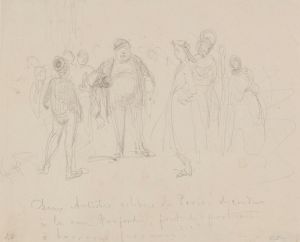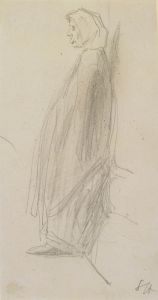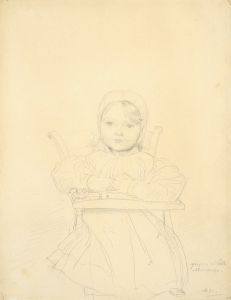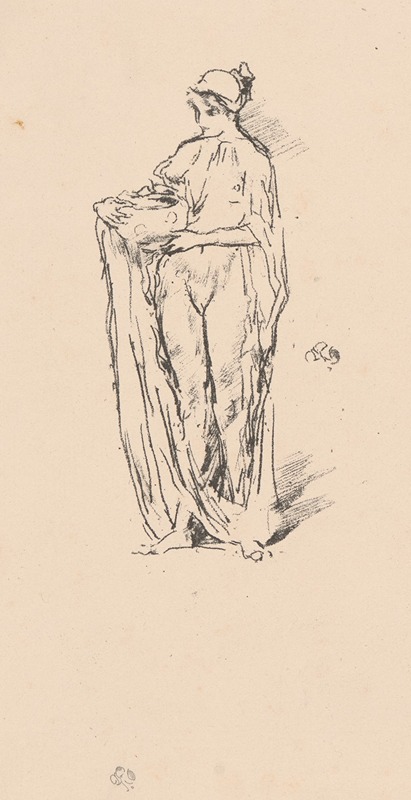
Girl with Bowl
A hand-painted replica of James Abbott McNeill Whistler’s masterpiece Girl with Bowl, meticulously crafted by professional artists to capture the true essence of the original. Each piece is created with museum-quality canvas and rare mineral pigments, carefully painted by experienced artists with delicate brushstrokes and rich, layered colors to perfectly recreate the texture of the original artwork. Unlike machine-printed reproductions, this hand-painted version brings the painting to life, infused with the artist’s emotions and skill in every stroke. Whether for personal collection or home decoration, it instantly elevates the artistic atmosphere of any space.
James Abbott McNeill Whistler was an American artist known for his work in the late 19th century, particularly his contributions to the Aesthetic Movement. Whistler's art is characterized by a focus on mood and atmosphere, often prioritizing tonal harmony over detailed representation. One of his lesser-known works is "Girl with Bowl," which, like many of Whistler's pieces, reflects his interest in subtle composition and the interplay of color and form.
"Girl with Bowl" is an example of Whistler's portraiture, a genre in which he excelled. Whistler often used a limited color palette to create a sense of unity and calmness in his paintings. This approach is evident in "Girl with Bowl," where the subdued tones contribute to the overall mood of the piece. The painting likely features a young female subject holding a bowl, though specific details about the model or the exact setting are not widely documented.
Whistler's technique often involved the use of thin layers of paint, which allowed him to achieve a delicate balance of light and shadow. This method is consistent with his broader artistic philosophy, which emphasized the importance of creating a harmonious visual experience. In "Girl with Bowl," Whistler's brushwork would have been instrumental in conveying the texture of the subject's clothing and the reflective surface of the bowl, adding depth to the composition.
The Aesthetic Movement, with which Whistler was closely associated, advocated for "art for art's sake," suggesting that the value of art lies in its beauty rather than any moral or narrative content. "Girl with Bowl" aligns with this philosophy, as it appears to focus more on the visual and emotional impact rather than telling a specific story or conveying a particular message.
Whistler's influence extended beyond his paintings; he was also known for his writings and his role in the art community. His famous legal battle with art critic John Ruskin, who criticized Whistler's work, underscored his belief in the autonomy of the artist and the intrinsic value of art. This incident highlighted Whistler's commitment to his artistic principles, which are reflected in works like "Girl with Bowl."
While "Girl with Bowl" may not be as widely recognized as some of Whistler's other works, such as "Arrangement in Grey and Black No. 1" (commonly known as "Whistler's Mother"), it nonetheless exemplifies his artistic style and philosophy. The painting is a testament to Whistler's skill in capturing the essence of his subjects through a refined and minimalist approach.
In summary, "Girl with Bowl" by James Abbott McNeill Whistler is a work that embodies the artist's dedication to tonal harmony and aesthetic beauty. Through his careful use of color and composition, Whistler created a piece that resonates with the principles of the Aesthetic Movement, emphasizing the visual and emotional qualities of art.





